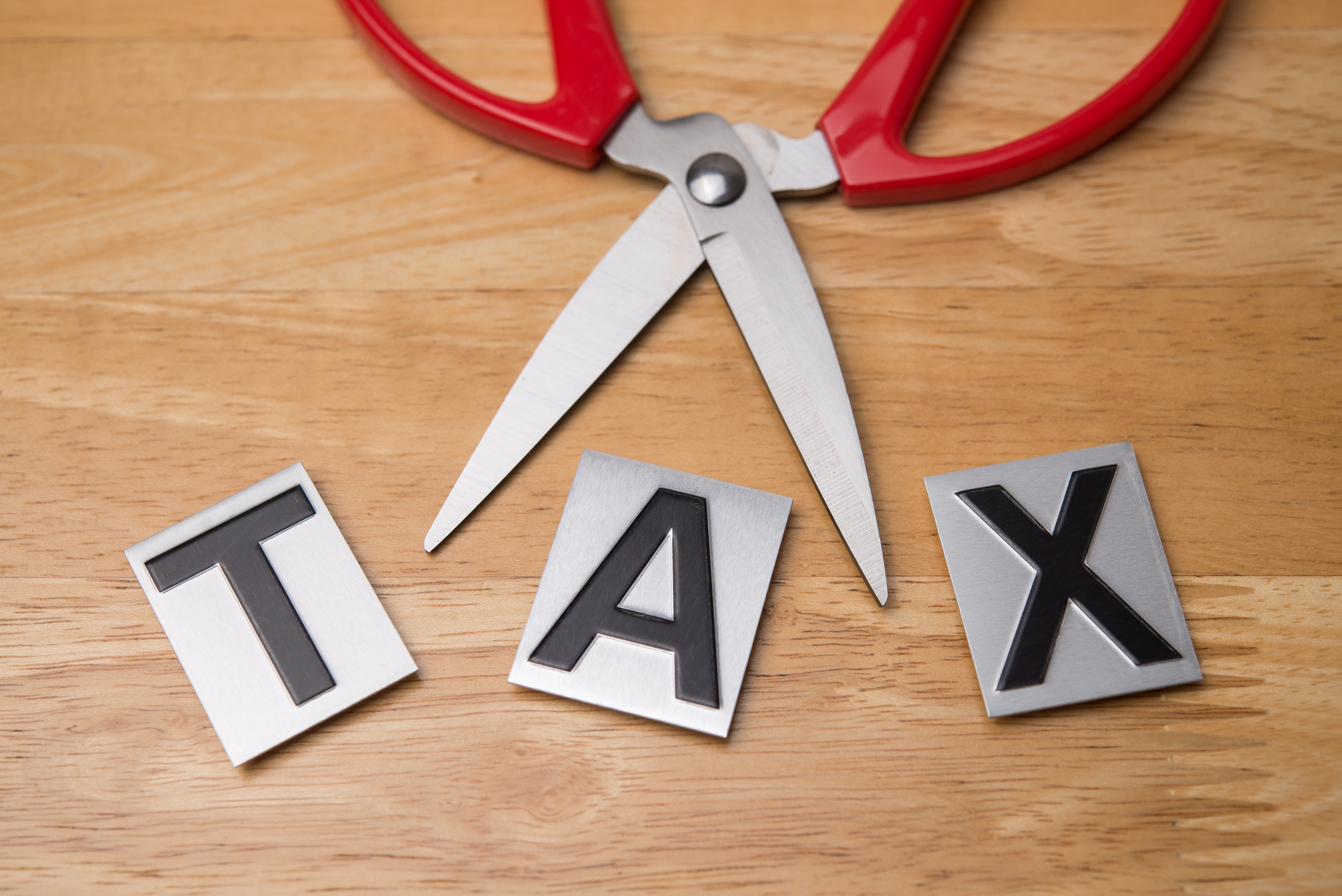Home Office Tax Deduction 2025: Work From Home Write-Offs
Can you claim the home office tax deduction this year?


A lot has been in the news regarding tax deductions. Under the dubbed "OBBA," several new tax breaks were created, like the car loan interest deduction and the elimination of taxes on tips. However, other tax breaks were permanently reduced or eliminated.
So what does that mean for the average work-from-home taxpayer?
Well, you may want to know if you can still claim a home office tax deduction on your federal income tax return. After all, you likely have some unreimbursed expenses.
But the reality is that not every taxpayer can claim the home office deduction.
From just $107.88 $24.99 for Kiplinger Personal Finance
Become a smarter, better informed investor. Subscribe from just $107.88 $24.99, plus get up to 4 Special Issues

Sign up for Kiplinger’s Free Newsletters
Profit and prosper with the best of expert advice on investing, taxes, retirement, personal finance and more - straight to your e-mail.
Profit and prosper with the best of expert advice - straight to your e-mail.
So, here's what you should know about the home office tax deduction before you file your tax return this filing season.
Home Office Tax Deduction 2025
- Track your expenses. If you qualify for the home office deduction, start tracking qualified expenses now.
- Measure your space. Take accurate measurements of your eligible home office to prepare for either deduction method.
- Maintain good records. Keeping complete records of your deduction method, qualified expenses, and other documentation relating to your home office may help in the event of an IRS audit.
Main Points
Work from home tax deductions
If you work from home, you may be able to deduct your business-related expenses. But if you don't qualify for that, you could be eligible for the "home office tax deduction." This tax break lets you write off expenses for the business use of your home. However, whether you can claim either of these deductions depends on your employment status.
Employees miss out. If you're a regular employee working from home, you can't deduct any of your related expenses on your tax return.
In the past, you could claim an itemized deduction for unreimbursed business expenses, including expenses for the business use of part of your home if they exceeded 2% of your adjusted gross income.
However, that deduction was suspended under the Tax Cuts and Jobs Act (TCJA), and then later permanently eliminated with the enactment of the OBBA.
For more information, check out Kiplinger's report Three Popular Tax Breaks Are Gone for Good in 2026.
Tax deductible home office expenses
Self-employed people can generally deduct office expenses on Schedule C (Form 1040), whether or not they work from home. Here are a few examples of what this write-off covers:
- Office supplies
- Postage
- Computers
- Printers
...and all the other ordinary and necessary things you need to run a home office.
But the home office tax deduction is an often-overlooked tax break for the self-employed. It can cover expenses for the business use of your home, including mortgage interest, rent, insurance, utilities, repairs, and depreciation.
What qualifies for the home office deduction?
Self-employed individuals may claim the home office tax deduction and, consequently, might lower their tax bill. Yet to qualify, you must use part of your home "regularly and exclusively" as your principal place of business.
If you only work from home for part of the year, you can only claim the deduction for the period that you can satisfy the "regularly and exclusively" requirements.
- "Regular use" means you use a specific area of your home (e.g., a room or other separately identifiable space) for business regularly. Incidental or occasional use of the space for business doesn't count.
- "Exclusive use" means you use a specific area of your home only for your trade or business.
The space doesn't have to be marked off by a permanent partition, but you can't claim the home office deduction if you use the space for business and personal purposes. However, the exclusive use requirement might not apply if you use part of your home for the storage of inventory or product samples, or as a daycare facility.
Additionally, the space must also be used:
- As your principal place of business for your trade or business;
- To meet or deal with your patients, clients, or customers in the normal course of your trade or business; or
- In connection with your trade or business, if it's a separate structure that's not attached to your home.
It doesn't matter what type of home you have (e.g., single-family, townhouse, apartment, condo, mobile home, or boat). You can also claim the home office tax deduction if you worked in an outbuilding on your property, such as an unattached garage, studio, barn, or greenhouse.
(See IRS Publication 587 for more information about these and other requirements for the home office deduction.)
Note: You cannot claim the home office tax deduction for any part of your home or property used exclusively as a hotel, motel, inn, or the like.
How much you may claim for your home office
If you qualify, there are two ways to calculate the home office deduction.
- Under the "actual expense" method, you essentially multiply the expenses of operating your home by the percentage of your home devoted to business use. If you work from home for part of the year, only include expenses incurred during that time.
- Under the simplified method, you deduct $5 for every square foot of space in your home used for a qualified business purpose. Again, you can only claim the deduction for the time you work from home.
For example, if you have a 300-square-foot home office (the maximum size allowed for this method), and you work from home for three months (25% of the year), your deduction is $375 ((300 x $5) x 0.25).
Tax Tip: If you use the simplified method, you can't depreciate the part of your home used for business. However, to the extent you qualify, you can still claim itemized deductions for mortgage interest, real property taxes, and casualty losses for your home without allocating them between personal and business use.
- The deduction is claimed on Line 30 of Schedule C (Form 1040).
- If you use your home for more than one business, file a separate Schedule C for each business.
- Don't combine your deductions for each business on a single Schedule C.
If you use the actual expense method to calculate the tax break, also complete Form 8829 and file it with the rest of your tax return. If you use more than one home for business, you can file a Form 8829 for each home or use the simplified method for one home and Form 8829 for others.
Combine all amounts calculated using the simplified method and amounts calculated using Form 8829, and then enter the total on Line 30 of the Schedule C you file for the business.
Can I write-off my side hustle on my taxes?
If you're an employee at a "regular" job, but you also have your own side hustle, you can claim deductions for business expenses and the home office deduction for your own business — if you meet all the requirements.
After all, being an employee doesn't mean you can't also claim the deductions you're entitled to as a self-employed person.
Read More
Profit and prosper with the best of Kiplinger's advice on investing, taxes, retirement, personal finance and much more. Delivered daily. Enter your email in the box and click Sign Me Up.
Rocky Mengle was a Senior Tax Editor for Kiplinger from October 2018 to January 2023 with more than 20 years of experience covering federal and state tax developments. Before coming to Kiplinger, Rocky worked for Wolters Kluwer Tax & Accounting, and Kleinrock Publishing, where he provided breaking news and guidance for CPAs, tax attorneys, and other tax professionals. He has also been quoted as an expert by USA Today, Forbes, U.S. News & World Report, Reuters, Accounting Today, and other media outlets. Rocky holds a law degree from the University of Connecticut and a B.A. in History from Salisbury University.
- Katelyn WashingtonFormer Tax Writer
- Kate SchubelTax Writer
-
 4 Great Tools to DIY Your Own Financial Plan
4 Great Tools to DIY Your Own Financial PlanSmart Savings Several tools picked out by Kiplinger that DIYers can use to make their own financial plan.
-
 The 7-Month Deadline That Sets Your Lifetime Medicare Premiums
The 7-Month Deadline That Sets Your Lifetime Medicare PremiumsUnderstanding Medicare enrollment is crucial, as missing deadlines can lead to permanent late enrollment penalties and gaps in coverage.
-
 Retirees Living in Portugal: You Need a Post-NHR Tax Strategy
Retirees Living in Portugal: You Need a Post-NHR Tax StrategyWhen your 10-year Non-Habitual Resident tax break ends, you could see your tax rate soar. Take steps to plan for this change well before the NHR window closes.
-
 Law Reversal Looming? Trump Eyes 2026 Gambling Winnings Tax Change
Law Reversal Looming? Trump Eyes 2026 Gambling Winnings Tax ChangeTax Deductions It's no secret that the IRS is coming after your gambling winnings in 2026. But how long will that last?
-
 Trump's Plan to Eliminate Income Tax: 7 Things to Know Now
Trump's Plan to Eliminate Income Tax: 7 Things to Know NowTax Policy The potential consequences of eliminating taxes in favor of Trump tariffs could impact everything from inflation to Social Security and might give some U.S. taxpayers pause.
-
 5 Types of Gifts the IRS Won’t Tax: Even If They’re Big
5 Types of Gifts the IRS Won’t Tax: Even If They’re BigGift Tax Several categories of gifts don’t count toward annual gift tax limits. Here's what you need to know.
-
 The 'Scrooge' Strategy: How to Turn Your Old Junk Into a Tax Deduction
The 'Scrooge' Strategy: How to Turn Your Old Junk Into a Tax DeductionTax Deductions We break down the IRS rules for non-cash charitable contributions. Plus, here's a handy checklist before you donate to charity this year.
-
 IRS Says You Made a Tax Return Mistake? A New Law Could Help You Fight Back
IRS Says You Made a Tax Return Mistake? A New Law Could Help You Fight BackTax Law Updated taxpayer protections change what the IRS must explain on error notices and how long you have to respond.
-
 Tax Refund Alert: House GOP Predicts 'Average' $1,000 Payouts in 2026
Tax Refund Alert: House GOP Predicts 'Average' $1,000 Payouts in 2026Tax Refunds Here's how the IRS tax refund outlook for 2026 is changing and what steps you can take now to prepare.
-
 New IRS Changes to FSA Contribution Limits for 2026: What to Know
New IRS Changes to FSA Contribution Limits for 2026: What to KnowHealth Care Flexible Spending Accounts have tax advantages worth looking into, especially in light of new IRS changes.
-
 Is a New $25,000 Health Care Tax Deduction Coming in 2026?
Is a New $25,000 Health Care Tax Deduction Coming in 2026?Tax Policy A proposal from GOP Sen. Josh Hawley adds to the chatter about health care affordability.
